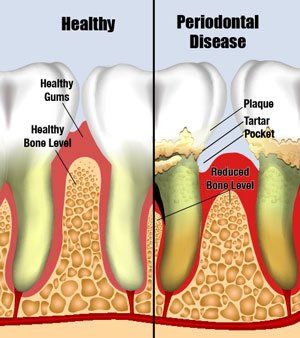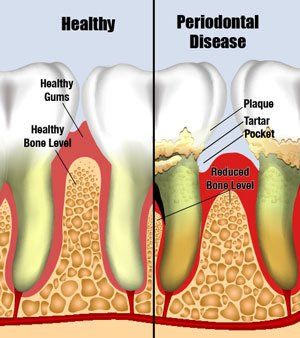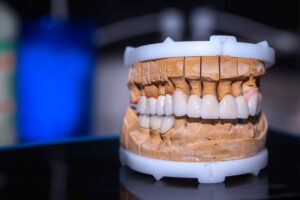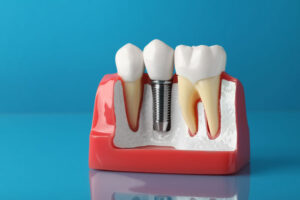When patients come to our office for cleanings, we routinely check their gums by doing a periodontal exam. A periodontal exam is a screening for periodontal disease. Periodontal disease, also called gum disease, is a chronic bacterial infection.
During the periodontal exam, we measure the amount of space in between the tooth and the gums. Healthy gums are pink and tight to the surrounding teeth. If the gums are unhealthy, there is more space between the teeth and the gums. Unhealthy gums appear red and swollen and bleed easily.
One of the biggest factors in gum disease is the presence of plaque and calculus (also known as tartar). Other factors for gum disease include age, smoking, genetics, stress, bruxism, and other systemic diseases.
If a patient hasn’t seen a dentist or had a cleaning in a long time, there is more likely to be a buildup of plaque and calculus. This is irritating to the gums and creates a bacterial infection. Periodontal pockets, which are big spaces between the gums and the teeth, are formed due to buildup of plaque and tartar and harmful bacteria. As the pockets get deeper, it becomes more difficult to clean the area under the gums with regular brushing and flossing. This is when a deep cleaning, also called a scaling and root planing, is recommended.
If deep pockets are left untreated, there will be damage to both the gums and the bone surrounding the tooth. When the bone surrounding the teeth is compromised, the teeth become mobile. Eventually the teeth may need to be extracted due to extensive gum disease.
Deep cleanings are recommended as the first step to treating gum disease. During a deep cleaning, one of our hygienists administers local anesthesia to keep the patient comfortable. An ultrasonic and hand instruments are used to remove calculus below the gum line and flush out bacteria in the pockets. Localized antibiotics can be placed in deeper pockets. The goal of the deep cleaning is to remove irritants under the gums so that the gums can heal. As the gums become healthier, the pocket between the tooth and the gum becomes smaller. When the gums return to normal health, the patient is able to clean them well with proper brushing and flossing.
After a patient has had a deep cleaning, we recommend dental cleanings every 3 months. This gives the patient the best chance at keeping plaque, tartar, and harmful bacteria at a minimum. This creates the best opportunity for maintaining healthy gums.





